Premium Model
Improved Dogs of TSX (Canada)
This model is inspired after the famous Dogs of the Dow, which is based on selecting a company with the highest dividend yield. A few modifications and improvements were done to create a passive investing model meant to provide superior results than the market. In order to preserve gains and mitigate losses during market contraction, this model makes use of market timing to switch to other asset types when there is an increased risk to hold equities.
In April 2018, this model has been revised to provide a better balance between value, income, quality and momentum. This model seeks low valuation by sorting stocks from Toronto Stock Exchanges that pays and has grown dividends. The model employs other techniques to attempt to rule out high yield stocks with poor prospects, or high yield stocks that are very volatile. If a stock typically trades with a certain dividend yield and it now presents a higher yield, then that is one mechanism to identify valuation, specially if such stock doesn’t typically have a volatile behavior. The model also attempt to identify upward momentum to avoid buying a declining stock, and there’s a strong ranking weight towards quality. Since the focus is on dividend income, cyclical resourcing sectors are excluded and the portfolio attempts to have a diversification across different sectors, to achieve better balance and minimize risks.
The stocks are only sold if dividends are cut or reduced, or to lock gains (upwards of 15%) or if they lose momentum, from both price and fiscal perspectives.
This is a mechanical model that chooses what to buy and sell based on a set of rules. Therefore, there will be losing trades from time to time. By no means it reflects a broken strategy. No model can outperform at all times, so it’s paramount to have the proper temperament to stick what a strategy that is aligned to your goals and risk tolerance.
See backtest information below to evaluate how these rules would have worked since 1999:
Model summary, including variable slippage (starting capital was $50,000) and fixed commission of $4.95:
Performance summary:
Stats information below, with winners, losers and how long typically these stocks are held for:
Below are various risk indicators as well:
Since the model typically holds positions for 5 months on average, the following histogram was run, to evaluate how consistently the model would perform if it started at different periods (roling offset was set to 1 week, while the performance period was set to 5 months); below is the histogram excess performance when compared to the benchmark (TSX):
And below is the same histogram, but showing the actual model portfolio performance, instead of the excess when compared to the benchmark (TSX);
TSX performs better during recovery periods (after crashes), but it’s more volatile, and not meant for income; this portfolio performs more steadily while focusing on dividend and quality.
The first screening criteria is to identify the biggest companies in TSX as per market cap. Then it narrows down the Universe of companies according to liquidity (via float turnover) and domicile (must be Canadian or have TSX as the primary Exchange).
The next screening criteria (buying rule) excludes stocks from cyclical resourcing sectors.
Then the next screening rule trims down the initial list so that only the top 20% least volatile remains in the list. This is to support the logic of having high yield as a form of valuation, if the stock is typically not volatile and historically has traded at a lower yield.
Then the model filters the list further by only keeping the stocks with upward momentum and the ones with highest dividend yield.
A final list is then compiled by selecting the top companies of each sector. To avoid sector concentration, the model will allow only up to 3 stocks from the same sector.
The model verifies weekly if any holding had their dividends reduced or cut – if so, the stock is sold and the process above repeats to find the next one. Otherwise, holdings are evaluated after being held for 6 months, or if after gains were locked. That evaluation continues weekly (to either determine if there are profits to be locked or if it’s been 6 months that the purchase was made), and it would be replaced only if a higher ranked stock is found.
Subscribe to this model
Interested in subscribing to multiple models? Discounts are available when subscribing to 2 or more models. Simply subscribe to your first model and then let us know which model you want to subscribe next, and we’ll send you a discount coupon.
Discount rates:
| 1st model | full price |
| 2nd model | 10% discount (applied to the 2nd model) |
| 3rd model | 20% discount (applied to the 3rd model) |
| 4th model | 30% discount (applied to the 4th model) |
| 5th model | 40% discount (applied to the 5th model) |
| 6th model | 50% discount (applied to the 6th model) |
| 7th model | 60% discount (applied to the 7th model) |
| 8th model | 70% discount (applied to the 8th model) |
Got questions? Check our Frequently Asked Questions for Premium models or contact us.
Already a member?
Performance Info:
(last updated on April 20, 2025)
Cost of this model: $31 / month. Cancel anytime.
Interested in subscribing to multiple models? Discounts are available when subscribing to 2 or more models. Simply subscribe to your first model and then let us know which model you want to subscribe next, and we’ll send you a discount coupon.
Discount rates:
| 1st model | full price |
| 2nd model | 10% discount (applied to the 2nd model) |
| 3rd model | 20% discount (applied to the 3rd model) |
| 4th model | 30% discount (applied to the 4th model) |
| 5th model | 40% discount (applied to the 5th model) |
| 6th model | 50% discount (applied to the 6th model) |
| 7th model | 60% discount (applied to the 7th model) |
| 8th model | 70% discount (applied to the 8th model) |
Got questions? Check our Frequently Asked Questions for Premium models or contact us.

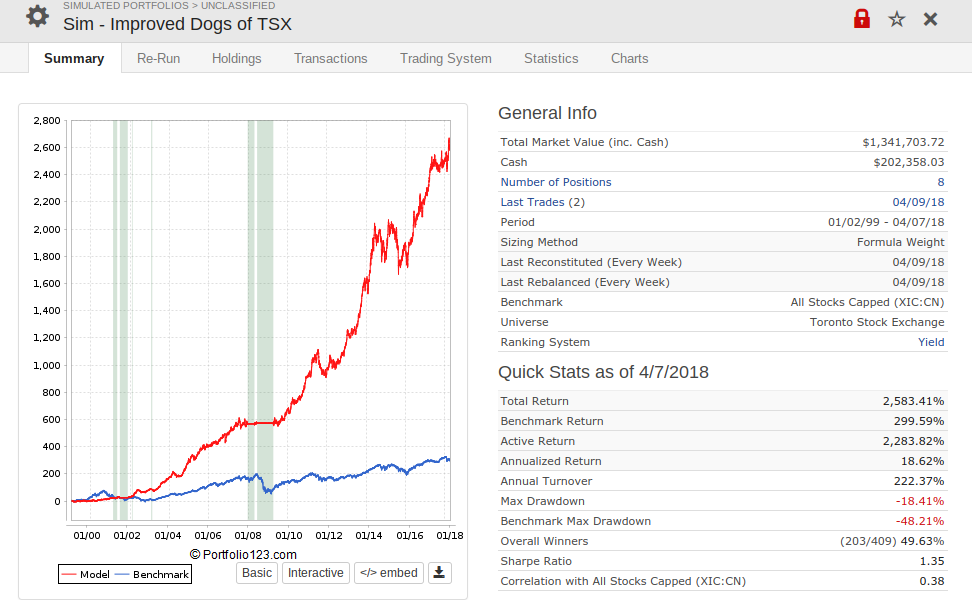
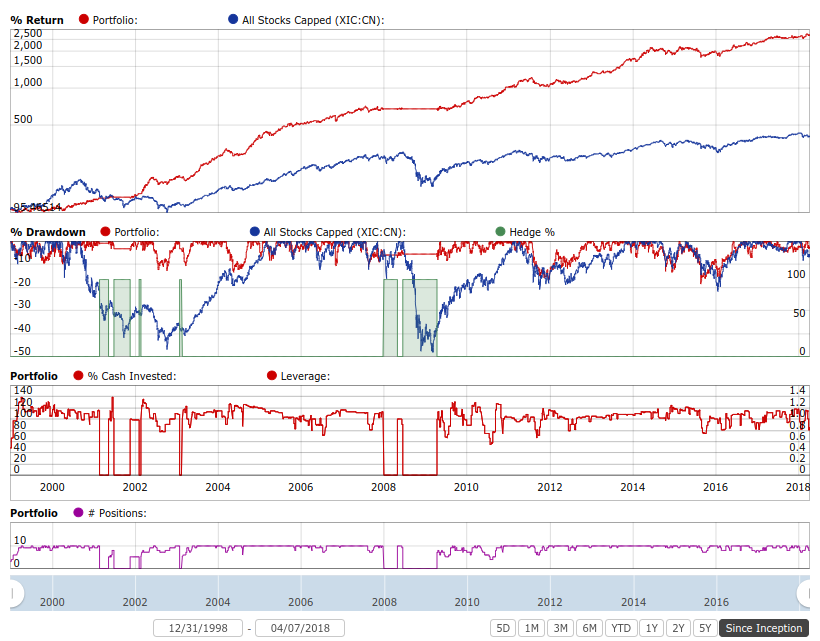
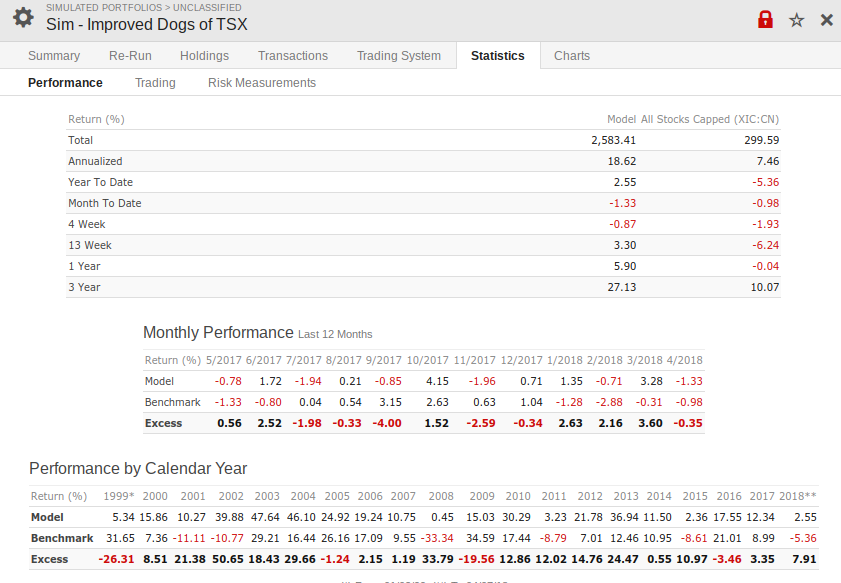
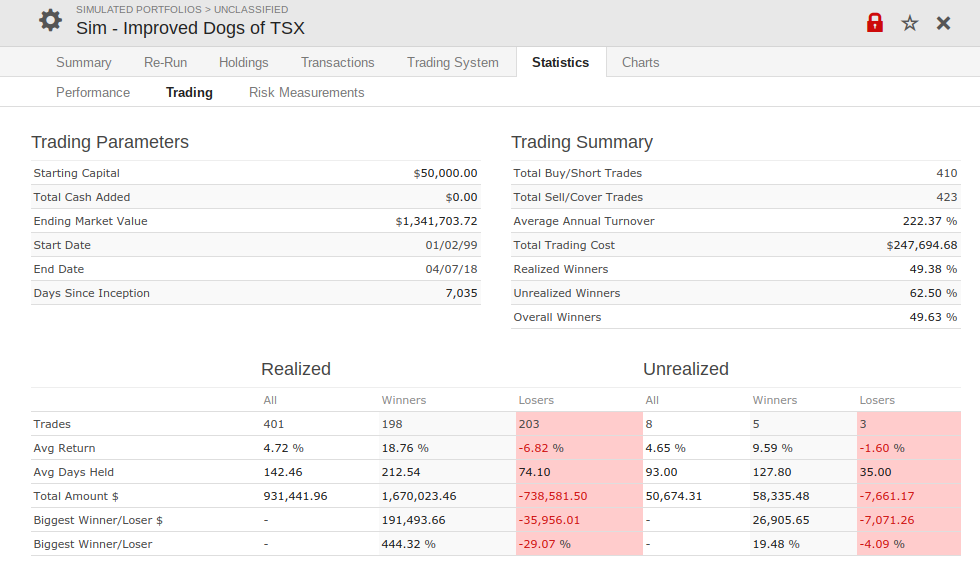
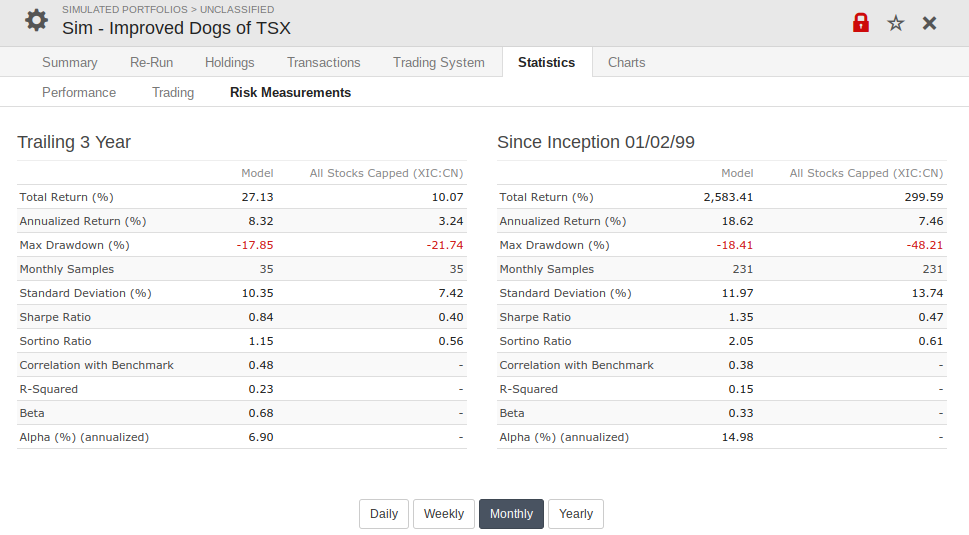



Awesome. Cheers!
Hey Rod, so how does this work? If I take 100k tomorrow, it looks like I will spend 9-13k per stock, depending on your current weight. So if its 14% weight right now and avg. cost is 15 dollars, and the current stock price is around 15 dollars, I should buy $14000 worth of stock as part of the 100k portfolio? And same with the rest?
Also, if it’s a high income stock, what role do TECK.B and MX:CN play in driving income?
When starting a new model (or when rebalancing weight, as per the weekly notifications), one should allocate the weight according to the next business day stock price. So if stock A requires 14% weight, and $100k is your total for this model, you would allocate 14% for that stock A ($14,000), and if the stock A is trading at $15, you would buy 933 shares of that stock. The reported average cost is simply the average price when the model started, but as people start at different timeframes, their average will differ too. However, from the point that anyone starts, it will mimic the model’s performance.
This is a variation of the Dog of Dow, so it’s not exclusive to high income stocks. A model focused solely on high income does poorly for TSX, hence I modified with value and quality drivers. At a minimum the model tries to find a stock with a yield higher than 3.5%, but since it ranks stocks via a quality and value weight, a percentage of the portfolio is allocated for stocks that pays any dividends with a good value and quality prospect, with estimated growth in sight, as a way to balance the total return of the portfolio.
So between 2 and 3 stocks will have a lower yield, but the combination of all stocks provides a high income with a good exposure for a decent total return overtime.
How much does commission affect the rate of return for these models?
I currently make very few trades and pay $9.99 per trade. I notice your model returns are based off of $4.95 per trade.
Does it matter much over the long run for a “low-turnover” model like Improved Dogs of TSX (Canada)? Is it worth considering a broker switch before starting to follow one of these models?
What about one of your “moderate-turnover” models?
Thanks
The commission will only play a significant role if a model trades often (high turnover). Questrade charges $4.95, and that’s where the commission price comes from. I use Interactive Brokers, which charges 1 cent per share (minimum $1), so it’s cheaper than Questrade and certainly cheaper than $9.95. This model went live on Jan 30, 2017, so it’s almost 9 months old and it had 10 transactions in total – 5 sell and 5 buy. Some months go by with no transactions at all, while other months have 3 or 4 sell / buys. For the moderate models, which could have buy and sell orders almost or every week, the $9.99 commission starts getting on the way. On that case, I’d suggest considering a cheaper brokerage, like Interactive Brokers.